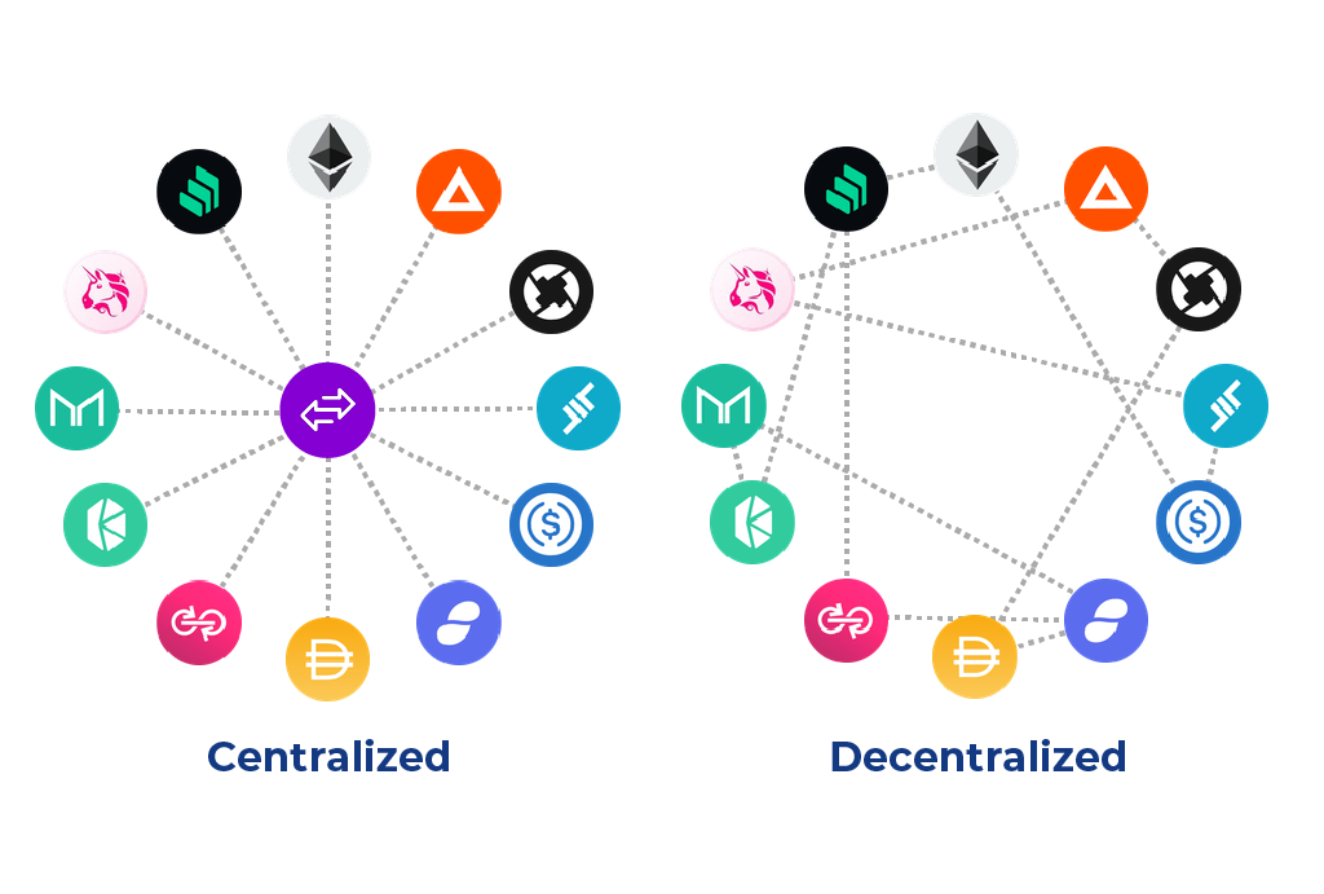Comparing DEX and CEX: A Guide to Web3 Exchanges
 Rajtilak Pandey
Rajtilak Pandey
The Web3 revolution is reshaping how we think about the internet, ownership, and finance. At the heart of this shift lies cryptocurrency, and exchanges are the gateways to this new digital economy. If you’ve dipped your toes into crypto, you’ve likely heard of centralized exchanges (CEX) and decentralized exchanges (DEX). But what’s the real difference, and why does it matter in the Web3 market? Let’s break it down.
What Are CEX and DEX?
A centralized exchange (CEX) is the traditional heavyweight of crypto trading. Think Binance, Coinbase, or Kraken. These platforms are run by a company that acts as a middleman. You deposit your funds, they hold them, and you trade through their system. It’s fast, user-friendly, and often packed with features like fiat on-ramps (converting dollars to crypto) and advanced trading tools.
On the flip side, a decentralized exchange (DEX) is the Web3 rebel. Platforms like Uniswap, SushiSwap, or PancakeSwap operate without a central authority. They’re built on blockchain smart contracts, letting users trade directly from their wallets. No middleman, no company holding your funds—just peer-to-peer action powered by code.
The Core Differences
Control of Funds
With a CEX, you’re handing over your crypto to the platform. It’s like giving your money to a bank—you trust them to keep it safe. But if they get hacked (think Mt. Gox) or freeze withdrawals (hello, FTX fallout), you’re at their mercy.
DEXs flip the script. You keep your funds in your wallet until the trade happens. “Not your keys, not your crypto” is the mantra here, and DEXs live by it.Privacy
CEXs often require KYC (Know Your Customer) checks—think ID uploads and address verification. It’s a regulatory necessity but a privacy trade-off.
DEXs? No such thing. Connect your wallet, trade, and done. It’s pseudonymous by design, aligning with Web3’s ethos of user sovereignty.Speed and Usability
CEXs are built for speed. Their centralized servers handle trades instantly, and the interfaces are polished for beginners and pros alike.
DEXs can feel clunky by comparison. Transactions depend on blockchain speed (Ethereum gas fees, anyone?), and the learning curve—wallets, slippage, liquidity pools—can intimidate newbies.Security
CEXs are juicy targets for hackers. A single breach can wipe out millions. They’ve gotten better with cold storage and insurance, but the risk remains.
DEXs shift the burden to you. If the smart contract is solid, there’s no central point to attack. But if you lose your private key or fall for a phishing scam, that’s on you—no customer support to call.
The Web3 Angle
Web3 is all about decentralization, transparency, and giving power back to users. DEXs feel like the natural fit here. They’re built on open-source code, run by communities (often via governance tokens), and let you trade assets without gatekeepers. Want to swap some obscure token that’s not listed on Binance? A DEX probably has it, thanks to liquidity pools.
CEXs, though, aren’t going anywhere. They bridge the old world and Web3, making crypto accessible to the masses. For many, the convenience of buying ETH with a credit card outweighs the philosophical appeal of decentralization. Plus, they’re often the go-to for institutional players who need reliability and compliance.
The Trade-Offs in Action
Imagine you’re a Web3 developer launching a token. You list it on a DEX like Uniswap—anyone can trade it instantly, no permission needed. But liquidity might be low, and price volatility could scare off early adopters. A CEX listing, like on Coinbase, could boost visibility and trust, but you’ll jump through hoops (and pay hefty fees) to get there.
Or say you’re a casual trader. A CEX lets you set limit orders and cash out to your bank account seamlessly. A DEX might save you on fees and keep you anonymous, but you’ll need to wrestle with MetaMask and pray gas prices don’t spike mid-trade.
The Numbers Tell a Story
In 2024, CEXs still dominate trading volume—Binance alone often handles billions daily. But DEXs are catching up. Uniswap’s monthly volume regularly tops $30 billion, a testament to growing trust in decentralized systems. The rise of Layer 2 solutions (like Arbitrum or Optimism) is making DEXs faster and cheaper, narrowing the gap.
Which One Wins?
There’s no knockout punch here. CEXs are the polished pros—great for beginners, high-volume traders, and anyone who values convenience. DEXs are the Web3 warriors—perfect for privacy buffs, DeFi enthusiasts, and those who want full control.
The Web3 market needs both. CEXs onboard the mainstream, while DEXs push the boundaries of what’s possible in a decentralized world. Your choice depends on your priorities: ease or autonomy, speed or sovereignty.
Final Thoughts
As Web3 evolves, the line between DEX and CEX might blur. Hybrid models are popping up—centralized platforms with decentralized features, or DEXs with slicker UX. For now, it’s less about picking a side and more about understanding what each brings to the table. Whether you’re stacking sats on Coinbase or farming yield on Curve, you’re part of the same ecosystem—one that’s redefining money, trust, and power.
What’s your take? Are you team CEX, DEX, or a bit of both? Drop your thoughts—I’d love to hear where you stand.
Subscribe to my newsletter
Read articles from Rajtilak Pandey directly inside your inbox. Subscribe to the newsletter, and don't miss out.
Written by
